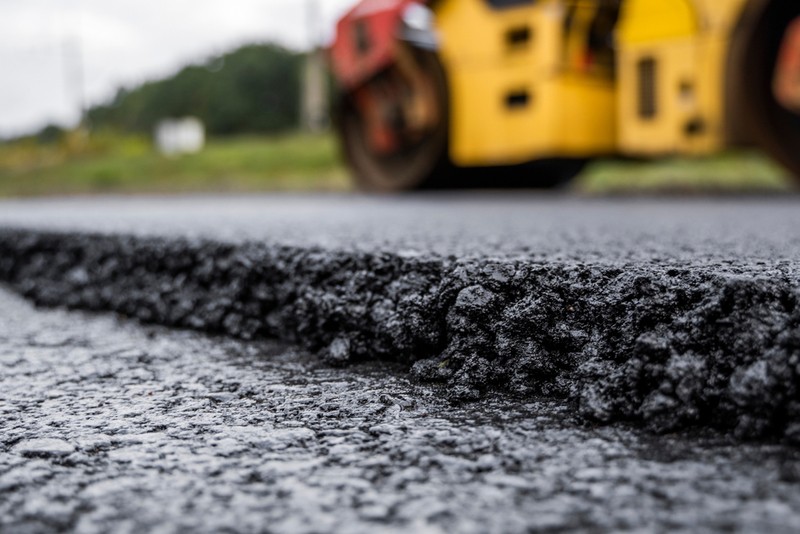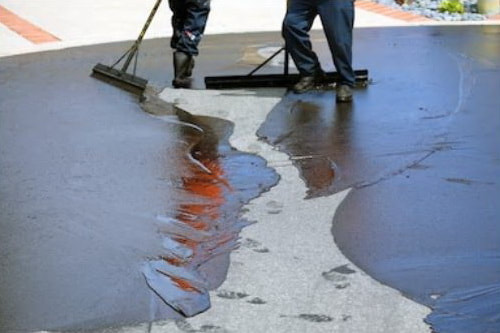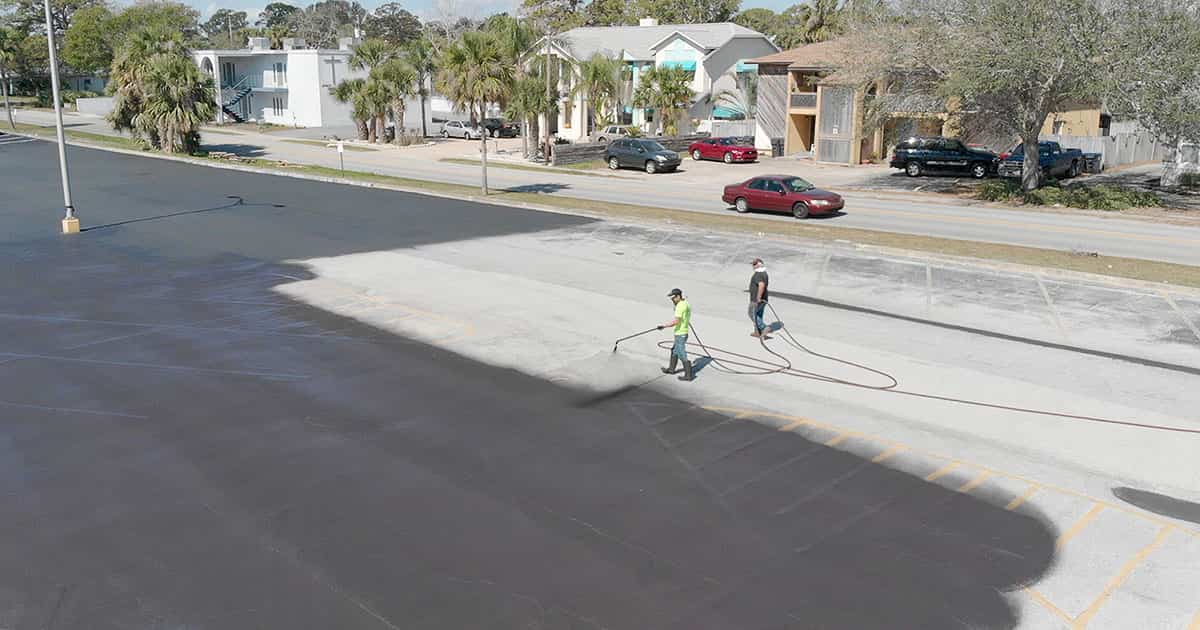Mastering Angled Parking: How Asphalt Sealing Enhances Commercial Lots
Mastering Angled Parking: How Asphalt Sealing Enhances Commercial Lots
Blog Article
Warm Mix Asphalt: A Lasting Remedy for Sidewalk
Warm Mix Asphalt (HMA) has arised as a leading sustainable selection for pavement solutions, supplying a myriad of ingenious modern technologies and environmental advantages. As the demand for environment-friendly building and construction techniques grows, discovering the nuances of HMA's sustainability can provide important insights right into the future of pavement solutions.
Environmental Benefits of Warm Mix Asphalt

In Addition, Hot Mix Asphalt aids to reduce city warmth island impacts. Its dark color takes in sunshine, decreasing the quantity of warm reflected back right into the ambience compared to lighter-colored sidewalks. This can decrease ambient temperature levels in urban locations, lowering the demand for a/c and inevitably minimizing power consumption.
Additionally, Warm Mix Asphalt adds to improved stormwater management. Its porous nature permits water to charge and penetrate the sidewalk groundwater supplies, minimizing drainage and the threat of flooding. These environmental advantages make Warm Mix Asphalt a lasting selection for paving roads and highways.
Energy Effectiveness in HMA Production
Is power performance a critical factor in the production of Hot Mix Asphalt (HMA)? Power plays a substantial function in the production of HMA, impacting both price and ecological sustainability. One key facet of power performance in HMA production is the usage of warm mix asphalt (WMA) technologies.
Moreover, advancements in plant modern technologies have led to even more energy-efficient HMA manufacturing processes. By optimizing energy use in HMA production, the market can lower its carbon footprint while maintaining top quality sidewalk materials.
Recyclability of Hot Mix Asphalt
The recyclability of Hot Mix Asphalt (HMA) is an essential facet of its sustainability and long-term ecological influence. HMA is one of the most recycled materials in the United States, with over 100 million lots of recovered asphalt sidewalk (RAP) being recycled annually in new sidewalk building. Recycling HMA uses several environmental benefits, such as minimizing the demand for virgin products, lowering energy consumption during production, and reducing the quantity of waste sent to garbage dumps.
The procedure of reusing HMA entails milling the existing sidewalk, squashing it right into smaller sized pieces, and blending it with new accumulation and asphalt binder to create a recycled mix. This recycled mix can often execute along with and even much better than traditional HMA, while calling for less basic materials and generating reduced Check Out Your URL greenhouse gas discharges. By integrating RAP into brand-new sidewalk tasks, roadway companies can preserve natural deposits, lower prices, and lessen the environmental footprint of roadway building and maintenance activities. Overall, the recyclability of HMA plays a significant duty in promoting sustainable practices within the sidewalk sector.

Long-Term Performance of HMA
Asphalt pavements show longevity and resilience over an extended period, reflecting the long-term efficiency of Hot Mix Asphalt (HMA) The longevity of HMA can be credited to its capability to endure rush hour loads, severe weather, and the effects of aging. Studies have actually shown that well-designed and properly constructed HMA sidewalks can last for two decades or even more with routine maintenance. The secret to optimizing the lasting performance of HMA lies in using high-grade materials, adhering to ideal methods in construction, and applying reliable upkeep techniques. Correct water drainage, regular assessments, and timely repairs are essential for maintaining the architectural integrity of HMA sidewalks gradually. Additionally, advancements in HMA modern technology, such as making use of polymer-modified binders and cozy mix asphalt, have better improved the toughness and long life of HMA sidewalks. By prioritizing high quality building and construction and maintenance practices, have a peek at this website HMA remains to verify itself as a sustainable and economical option for long-lasting pavement infrastructure.

HMA: Durability and Sustainability
Demonstrating both resilience and sustainability, Warm Mix Asphalt (HMA) has become a keystone in the construction of long-lasting pavement frameworks - commercial parking lot paving. HMA's longevity comes from its ability to hold up against heavy lots, rough weather condition problems, and high traffic quantities, making it a dependable selection for highways, freeways, and airport runways. The make-up of HMA, which generally consists of aggregates, binder, and filler, plays a vital function in boosting its longevity and blog resistance to tear and put on
Moreover, HMA's sustainability lies in its recyclability and energy-efficient production procedure. The capacity to recycle reclaimed asphalt pavement (RAP) in brand-new HMA mixes reduces the demand for virgin materials and lessens the ecological impact of pavement building and construction and maintenance. Furthermore, the power performance of producing HMA hinges on its lower mixing temperatures contrasted to various other sidewalk products, leading to decreased energy consumption and greenhouse gas discharges.
Verdict
In verdict, warm mix asphalt (HMA) offers a lasting remedy for pavement with its eco friendly attributes. HMA's recyclability, power effectiveness in manufacturing, and long-lasting durability make it a green selection for road building and construction.
HMA is one of the most recycled materials in the United States, with over 100 million lots of reclaimed asphalt sidewalk (RAP) being reused each year in brand-new sidewalk construction.The procedure of recycling HMA includes grating the existing pavement, squashing it into smaller sized items, and mixing it with new accumulation and asphalt binder to develop a recycled mix.Asphalt sidewalks show toughness and durability over an extensive period, mirroring the long-lasting efficiency of Hot Mix Asphalt (HMA) In addition, advancements in HMA modern technology, such as the usage of polymer-modified binders and warm mix asphalt, have better improved the durability and durability of HMA sidewalks. The capability to recycle reclaimed asphalt pavement (RAP) in brand-new HMA mixtures lowers the demand for virgin products and minimizes the environmental influence of pavement building and upkeep.
Report this page